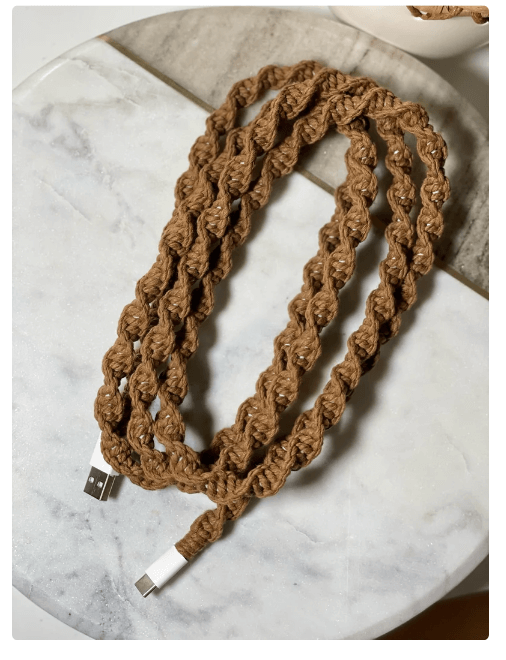Table of Contents
Welcome to a 5-step strategy designed to help you concept and choose the right promotional products for your brand–no matter who sells the products.
Promotional products have long since proven they are effective for marketing. The numbers don’t lie. Promotional Products Association International (PPAI) has a treasure trove of research to back up the impressive ROI potential for swag bag items. But not every promotional product performs the same. There are winners and losers–but what factors determine the success? Is finding an effective promo item just luck? No. There is a strategy you can employ to give your branded promo products an advantage.
You have to be strategic about your branded giveaway items to accomplish your marketing goals.
In this article, we’ll lay out 5 important elements you need to consider when choosing the right promotional product for your brand. We’ll explore the importance of analyzing your target audience, choosing the ultimate marketing objective, aligning with your brand identity, budget considerations, and finally choosing your swag bag item. When you understand how to approach these topics with the right perspective, you’re setting yourself up for swag bag success.
This is not a list of the most popular promotional products. Rather, we are here to teach you a method for how to actually pick an effective promotional product for your brand, for a specific event. Want your swag bag items to stand out, be memorable, and help accomplish your promotional product marketing goals? Then you’re in the right place. Let’s talk swag bag strategy.
1. Analyze Your Target Audience in 3 Key Steps
This can be tricky. You should consider your target audience with regard to their wants, likes, needs, and pain points. Why is that tricky? Because it’s tempting to just skip ahead to the stuff you would like to receive, or the items that stood out to you at the last event you attended. Just remember, you are not your target audience (not usually). Accepting this point is your first opportunity to break away from the herd. So get out your pen and paper, because we’re about to start brainstorming. Here are some strategic questions to consider about your target audience:
- What other items do you think they’ll already be receiving at the event or trade show? Those items should be eliminated. You don’t want to be a duplicate item in their swag bag. It increases the chance your item might go straight into the garbage can, or to a kid as a “surprise.”
- Is there any research that shows a common interest among your target audience(s)? Do most of them have children? Do they love cooking? Are they mostly over the age of 60? Look for insights about your target audience that is based on research. Take note of those commonalities, and see if you are inspired to gift them something useful to their lifestyle.
- If your target audience is united by a common industry or activity, what do you think they already own? For example, if your target audience is mostly campers, they probably already have a flashlight, right? But do they have a fancy flashlight? One that has a solar charger, or waterproof matches inside, or a compass? Try to find a superior version of a basic item that your target audience already owns. We’ll dive deeper into this idea in the budget considerations section below.

2. Choose the Ultimate Marketing Objective
What is the marketing objective for your promotional product? Drive sales? A free giveaway might drive sales, if you’re selling the item you’re giving away. Free samples work great. But more often, a promotional product’s greatest effect is to increase brand awareness. And yes, causing someone to remember your brand is nice. However, if you can get your potential customers to remember a promise from your brand, that is much better. In fact, this should be the ultimate goal for your promotional products. Because people respond to appealing promises. If your audience likes your promise, they’ll make an effort to remember your brand. If people don’t respond to your promise, it’s because your promise isn’t very believable, or appealing enough.
How do you make a promise using promotional products? Print it right on the swag. For an insurance company, it’s a hat at a golf tournament that says, “We’ve got you covered when life gets off course.” For a dairy farm, it’s a cheese sandwich in a branded reusable container at a beach venue that says, “A sandwich in the sun. Fresher is always better.” Make promises, and relate them to the venue and the item as much as possible.
3. Aligning with Your Brand Identity

What are your brand’s core values? List them out and ask yourself what items are related to your core values? Here’s an example of this brainstorming process. Below are Nike’s core values as of 2023.
Nike’s core values are central to everything they do and have been fundamental to the success they have accomplished since its inception. These core values include “innovation, being authentic, inspiration, every athlete in the world, connected, and being distinctive.” Through these core values, Nike has achieved greatness as a global leader in sports apparel and footwear.
“Nike vision and mission statement” at BUSINESSMODELANALYST.com
Nike can use their core values to brainstorm swag bag ideas when they take into consideration the target audience and the event. For example, at a body builder’s conference, Nike could give away a swag bag that takes a lot of strength to open (so you get some exercise while finding out what’s inside). Add a little language about being strong enough to reach your goals, and you have yourself a conversation piece–of swag. Why does that work? It reflects innovation, inspiration, every athlete in the world, and being distinctive. But if you used this same idea at any other kind of conference, people would probably be irritated about having to work so hard to open the swag bag. Context is everything.
4. Budget Considerations
Go fancy with something less expensive. Instead of giving away a $5 tumbler, go with a $5 keychain.
If you’re like 99% of companies, you have a budget for your swag bag items. Great. Divide your budget by the number of items you plan to give away. Let’s say you end up with an average of $5 per promo item. The goal is to find an item you can give away that’s considered above average in quality. Go fancy with something less expensive. Instead of giving away a $5 tumbler (average price for an average tumbler), go with a $5 keychain. I don’t know what a $5 keychain looks like, but it’ll probably do something cool or at least look amazing.
5. Choosing Your Swag Bag Item

Jessica owns a cell phone repair chain, and “creative solutions” is one of her brand’s core values. She’s going to a national rodeo event in her state and wants to promote her brand. She chooses a cell phone charge cord sleeve that makes the cord look like the rope used in rodeo events. Printed on the sleeve is her website “FixMyPhoneASAP.com” and the slogan “We know the ropes for fixin phones fast.” Fun, right?
(Item for sale on Etsy in the Balmsii Essentials store.)
What is the function and usefulness of the product?
Does it do something that is related in any way to your brand? The functionality of a promotional item may be very utilitarian, like a bottle opener. Or maybe your item’s job is to be fun, like silly sunglasses. Whatever it does, find a way to make it relevant to your brand. Usefulness matters. If people want to use it, they’ll want to keep it. According to PPAI, 81% of people keep promotional products because they’re useful.
Is the quality of the item good enough to represent your brand?
This is so important. There are two big reasons you should always go with above-average quality. First, when a product’s quality is above average, people want to hold on to it. Because it’s special. If the item is average quality, it’s easily replaceable and therefore not very memorable. The second reason you should aim for using an above-average quality item is for your brand to be perceived as being above average. Your brand gets instant credit for being thoughtful, witty, or maybe even wise, when your swag idea connects with your target audience. Am I making a stretch with this idea? Absolutely not. Jump down to this breakout section to learn about ethos in marketing.
What is the printable area?
Your brand colors and fonts should stand out on your promotional item. The challenge with branded pens for example, is how small, visually, the space is for printing. In some situations, a branded pen may be a great idea. But generally speaking, you should look for a printable area that does not require a Baby Boomer to pull out their reading glasses to see your logo or design. Bigger is better in most cases. If you’re trying to decide between two items, the printable area should play a role in your decision.
How long will the item last?
Is it a bottle of water? That’s a very short shelf life for a message to last. As soon as they drink the water, the message is gone. If it’s an outdoor event and you want to give away water, great. Give away cold water with a branded coozie so they’ll keep it, rather than a branded bottle of water.
Always go with above-average quality.

Ethos in Marketing: The word “ethos” was created more than 2,000 years ago by a Greek philosopher, Aristotle. But he simply put a word to an idea that has always been a part of how humanity thinks. In short, it’s a word that represents “speaker credibility” or in some cases worthiness. In the case of high-quality promotional products, there is a transfer of ethos that happens. Good ethos is created by the quality of the product (“Hey, this is a quality product!”). Then that ethos is transferred to the brand who gave it away (“This company just gave me a quality product. That was smart…They’re smart.”) That is a memorable moment. The end result is a person cherishing the swag item, and holding the brand in high regard. This moment is a big part of what makes promotional products so effective. For this reason, always go with an above-average quality product.
Conclusion
Strategy is a part of marketing, and promotional products are a marketing tool. I think the surprise is, it’s not really about the item itself. What works great at one event may be a flop at another. It’s about choosing the right item, for the right people, at the right event, that’s right for your brand. And the message you deliver matters–a lot. Find a way to make an appealing promise to your potential customers, and they will seek out your brand to make good on your promise. This 5-step strategy is your key to swag bag idea success.

